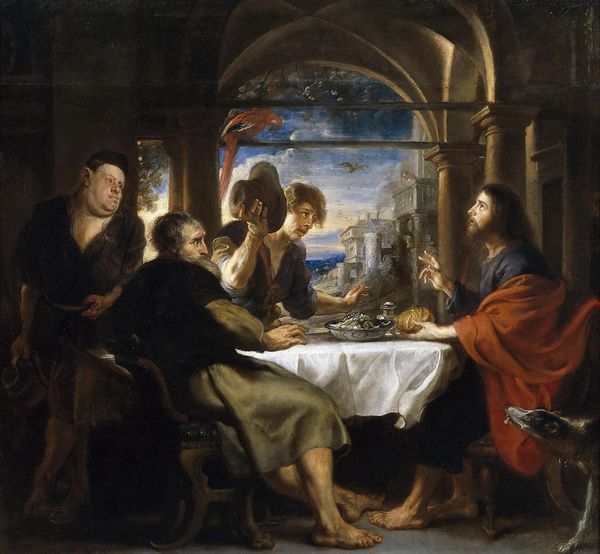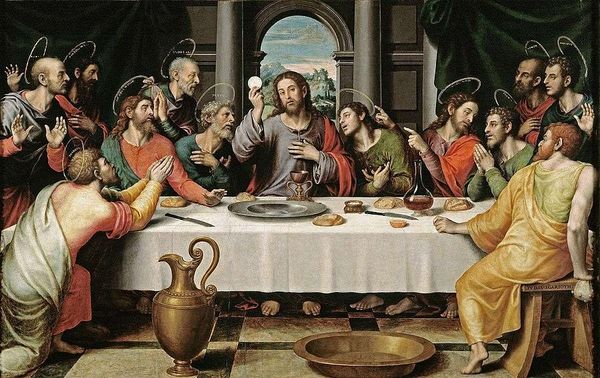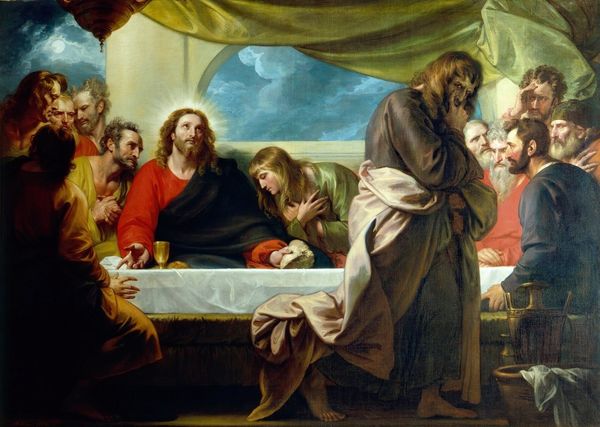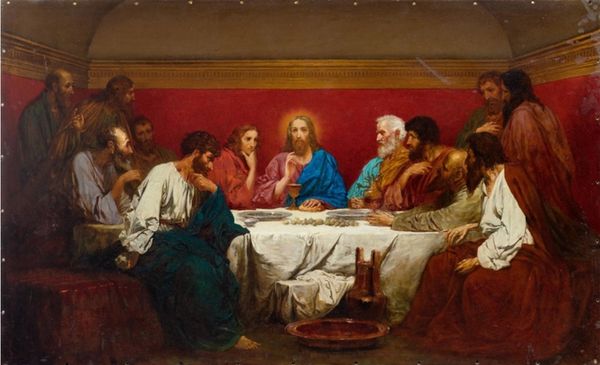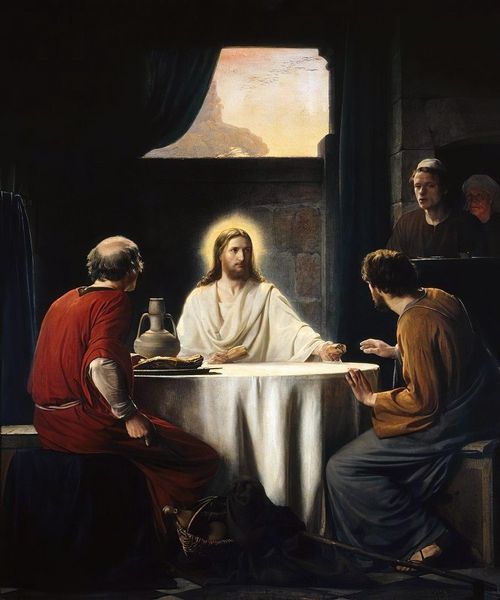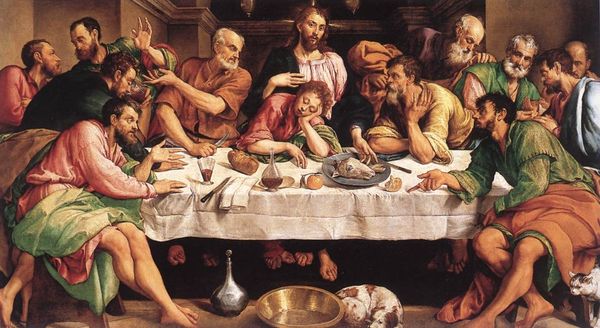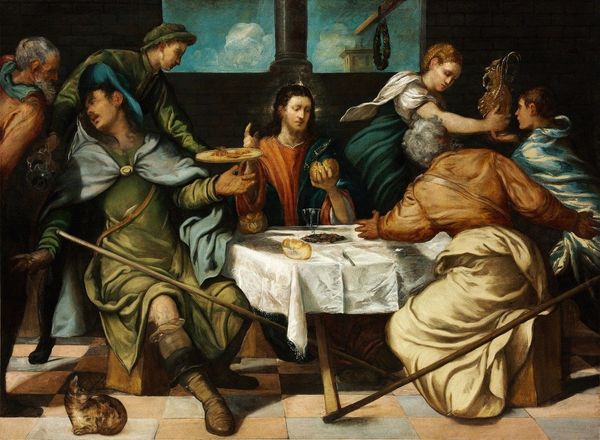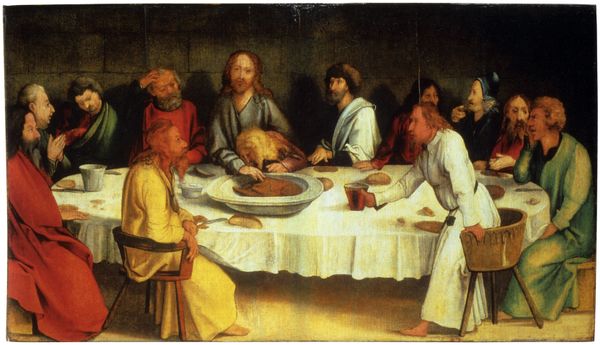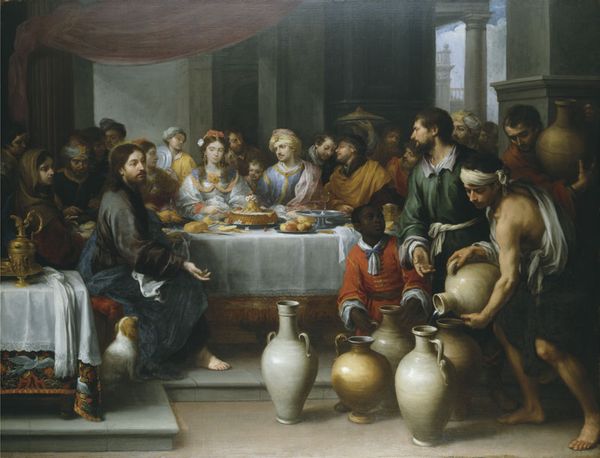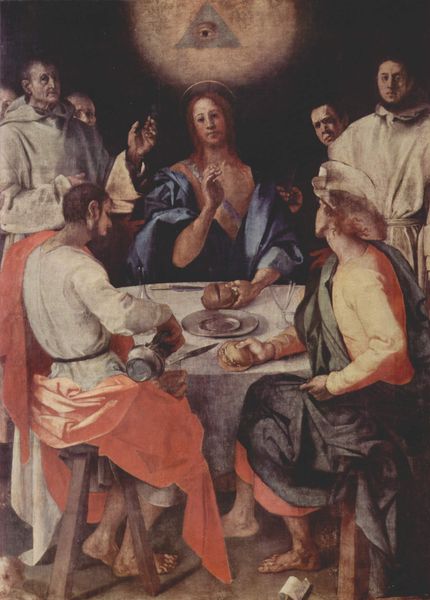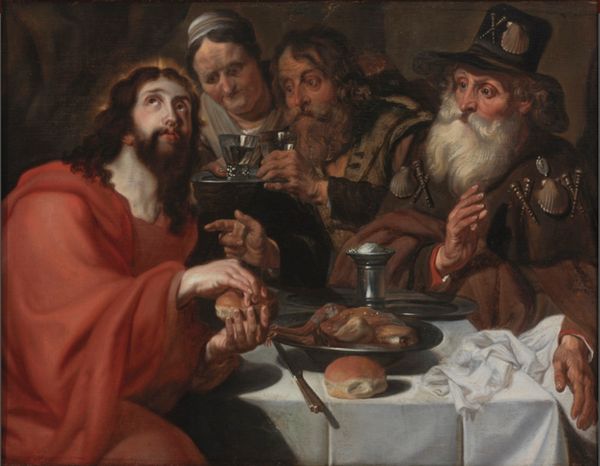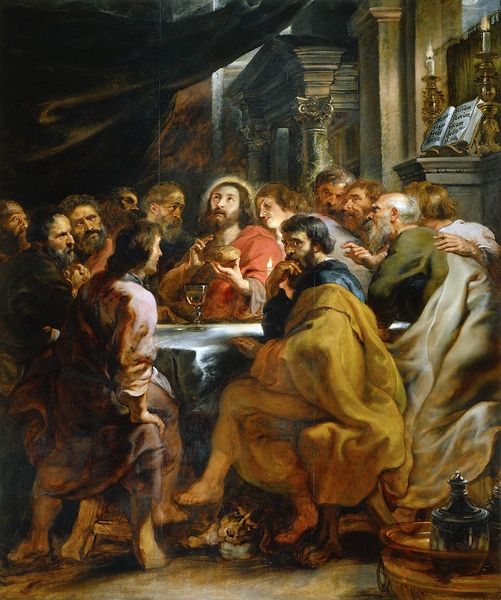
oil-paint
#
portrait
#
venetian-painting
#
oil-paint
#
figuration
#
oil painting
#
jesus-christ
#
underpainting
#
christianity
#
painting painterly
#
genre-painting
#
history-painting
#
italian-renaissance
#
christ
Dimensions: 169 x 244 cm
Copyright: Public domain
Curator: Titian’s "Supper at Emmaus," an oil painting from around 1530, currently residing in the Louvre, presents a pivotal biblical scene ripe with narrative tension. Editor: It strikes me immediately by its pronounced chiaroscuro; there's an interplay of dramatic light and shadow across the canvas, heightening the sense of solemnity and mystery within the depicted moment. Curator: The artwork reflects a critical juncture post-resurrection where the resurrected Christ reveals himself to two disciples during a meal in Emmaus, but perhaps more profoundly, it illuminates the historical context of religious doubt and re-evaluation prevalent during the Renaissance. The depiction questions who has access to religious revelation. Is faith about social status or open to all who seek it? Editor: From a compositional perspective, the painting meticulously directs the viewer's eye. The table forms a strong horizontal line, grounding the scene, while the arrangement of figures around it generates a dynamic, almost theatrical space. Notice, for example, the highly polished surfaces and tactile fabrics that amplify the overall sensory experience. Curator: And note too, the subversive details – the servants, seemingly unaware, grounded in their own mundane realities, implicitly critiquing social indifference to divine moments. We can't ignore the use of genre painting and historical painting intertwined to pose profound theological and societal questions. This use places marginalized figures and their perspectives into dialogue with sacred stories. Editor: I find the painterly quality particularly compelling. Titian’s brushstrokes are visible, and add energy to the composition, emphasizing the transience of the moment—how quickly revelation comes and goes, echoing both the joy and confusion inherent to spiritual experience. Curator: Yes, this rendering adds further dimensions of humanity, challenging traditional depictions of Christ, placing the biblical narrative firmly within a relatable social landscape, reflective of its time and ours. Editor: After viewing this powerful representation of "Supper at Emmaus", I see not just a religious scene, but a masterclass in composition, materiality, and mood setting. Curator: And I see how it compels viewers to re-examine faith through social strata. It's an artwork that continually offers fresh insight with each new socio-political framework.
Comments
No comments
Be the first to comment and join the conversation on the ultimate creative platform.
